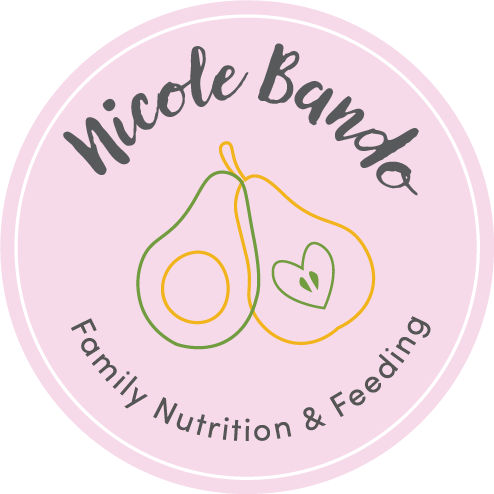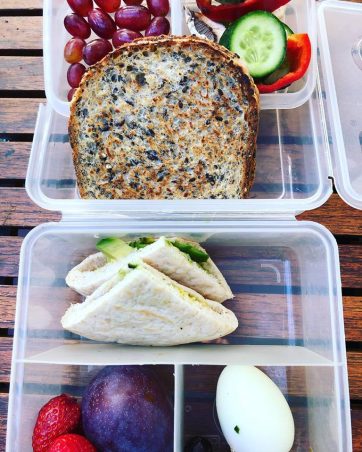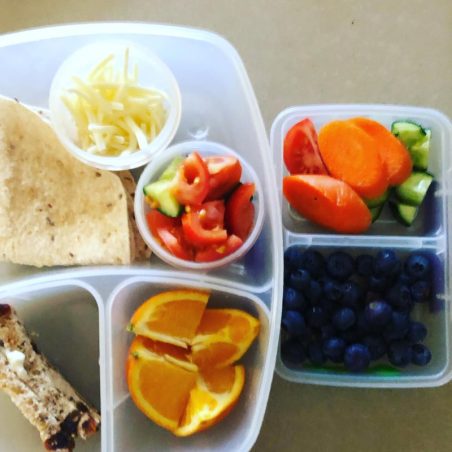Nicole Bando | Dietitian & Lactation Consultant
Search by typing & pressing enter
Search by typing & pressing enter
Search by typing & pressing enter
Nutrition and Breastfeeding Articles
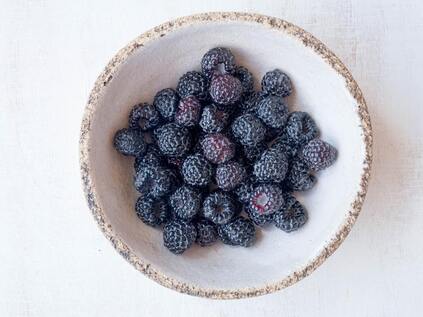
‘It is hard to know what to believe with so much conflicting nutrition
information. I provide you with the latest evidence-based facts.’
Categories
build a school lunch box: 4 new ideas
It can be challenging encouraging children to eat different foods, but with persistence and consistency, children will try new things, allowing them to reach their growth and learning potential.
Hover over each lunch box photo for details of what is inside. Remember that even small changes are positive, so try simple swaps such as:
– Swap a processed snack for a piece of fruit
– If vegetables are no longer sent, start by sending a single vegetable stick or slice each day, knowing that acceptance takes time and one day it may be tasted or eaten.
– Swap a less nutritious snack for something better e.g chips for popcorn, or a muesli bar for Vita Weats and cheese.
– or banana bread for a regular sized piece of raisin bread with cream cheese.
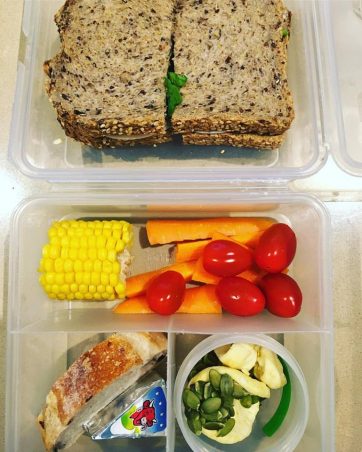
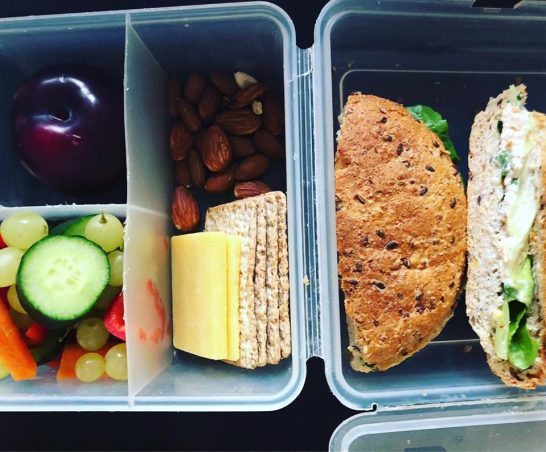
Breakfast cereals – how do you choose?
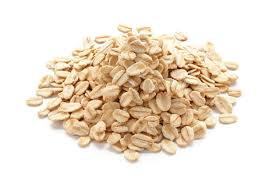
Data collection by Victoria Hobbs, Deakin University
Disclaimer – I receive no remuneration from reviewing these brands; this is an unbiased, professional opinion based on a selection, and is not a definitive list.
How many times have you stood in the breakfast cereal aisle overwhelmed by the sheer number of options? So many people say they are confused about what to eat. I am often seen juggling multiple boxes of cereal, analysing the nutrition information in order to give the best advice to my clients, and make sense of it myself. Cereals can provide valuable nutrients such as fibre, vitamins and carbohydrates; though many contain little nutrition and an undesirable amount of sugar and salt. The complex interplay of the ingredients in your cereal could either fuel your performance, or leave you feeling hungry and fatigued early in the day.
Today, I have ranked a range of popular fruit and nut cereals according to their nutritional profiles (fibre, sugar, whole grain content and sodium), to remove the guess work and make healthier = easier. Where does your daily cereal fit into the list and is it time to make a switch?
Best choices
As a general guide, choose cereals that are:
- Greater than 50% wholegrains – specified on the ingredients list
- Greater than 10g fibre/100g
- Less than 400mg sodium/100g
- 15g sugar/100g – slightly higher is OK if dried fruit included. Note that dried fruit and fruit may contribute to overall sugar content, this is different to refined sugar.
- Choose untoasted over toasted muesli varieties
Avoid cereals that list sugar, or a variant within the first 3 ingredients (e.g. glucose, dextrose, honey, golden syrup, coconut sugar, barley malt, rice syrup, etc.). Beware health claims – if it sounds too good to be true, it generally is.
So with all of this in mind, the best choices include:
- Be Natural Cashew, Almond, Hazelnut & Coconut: the winner with high fibre, 17.1g, low sugar: 12g, and low sodium: 195mg. Top 3 ingredients: wholegrain cereals, nuts, rice – all valuable sources of nutrition.
- Be Natural Pink Lady Apple & Flame Raisin: Dried fruit raise the sugar content, but still a good choice – low salt 210mg, high fibre 14.1g, high whole grains, sugars moderate 17.1g –(wholegrain cereals, rice, fruit).
- Morning Sun Natural Style Peach & Pecan Muesli: Great muesli choice, high fibre 11.1g, low salt 18mg and sugar 14.4g from dried fruit is considered low-moderate (Wholegrain oats, dried fruit, wheat bran)
- Morning Sun Natural Style Apricot & Almond Muesli: Similar to above. Fibre 10.3g, sugars 15.1g, sodium 19mg (wholegrain rolled oats, dried fruits, wheat bran)
- Lowan Fruit & Nut Natural Muesli: competes with Morning Sun, a great choice. High fibre 9.7g, moderate sugars 15.5g (from dried fruit), sodium 36mg (Wholegrain oats, dried fruits, wheat bran straws)
- Uncle Toby’s Natural Style Swiss Blend Muesli: untoasted, high fibre 10.2g, low salt 14mg, sugar 16.3g – from dried fruit and fruit pieces as 2nd, 3rd ingredients (Rolled Oats (72%), Dried Fruits (16%) [Sultanas (8%))
The next list shows moderate choices – less fibre and/or more sugar. Choose sometimes
- Uncle Toby’s O&G Bircher Muesli Cranberry, Almond & Quinoa:moderate fibre 8.1g, low sugar 11.4g, low sodium 11mg, untoasted (Rolled oats, dried fruit, almonds). Add some bran to boost fibre content
- Carman’s Natural Bircher Museli: Lower fibre 7.9g, moderate sugar 16g, though than other options. Low sodium 7mg. Top 3 ingredients look good (Wholegrain oats, fruit, nuts). Add bran, LSA, fruit to boost fibre content.
- Kellogg’s Special K Fruit & Nut: Moderate fibre 8.1g, high sugar 19.6g, moderate sodium 310mg (Rice, wholegrains, fruit). Better choices above
- Uncle Toby’s Plus Fibre Apple and Sultanas: It’s a trade-off, with high fibre 17.9g, but higher sugar content 23.3g, (wholegrain cereals, dried fruit – contributing to high sugar content, wheat bran), low sodium. Either mix this with wholegrain/bran flakes, or choose a different option and add a small amount of your own dried fruit to keep sugars down.
- Table of Plenty Macadamia, Cranberry & Coconut Muesli:despite high fibre 10.4g, low sodium 15mg, moderate sugar 17.3g, derived from dried fruit and golden syrup as 2nd, 3rdingredients – not a satisfying choice.
- Carman’s Classic Fruit & Nut Muesli: toasted muesli, moderate fibre 8.7g, moderate sugars 15g (despite first ingredient wholegrain oats, with golden syrup in the top 3, this is higher in refined sugars. Choose an untoasted muesli with more nuts and less added sugar.
Lastly, many of these may sound healthy, but are not the best choices for breakfast…high sugar, low fibre, low nutrient contribution and not the best way to start the day.
- All Bran Honey Almond: Sounds healthier than it is with All Bran in the title. High fibre 16.1g, but also very high sugar content 23.9g (Wholegrain wheat, wheat bran, sugar), moderate salt 315mg.
- Uncle Toby’s Oat Crisp Honey & Macadamia Cereal: Toasted, high sugar 22g – 2nd ingredient Wholegrain cereals, sugar, macadamias), fibre moderate 8g.
- Kellogg’s Just Right Cereal: Not really just right, with high sugar 28.7g, note ingredients (Wholegrain cereals, sultanas, sugar), low salt 30mg, high fibre 10.2g. Better choices above
- Arnold’s Farm Toasted muesli clusters: Sugar high 19.5g – added as second ingredient (Wholegrain Rolled Oats, Glucose, Oat Bran), steer clear, fibre 8.2g, low sodium 30mg.
For individual advice to optimise your nutrition to fuel your day, come and see Nicole at:
NEST Family Clinic, 289 Kooyong Road, Elsternwick VIC 3185,
how to socialise your way to health
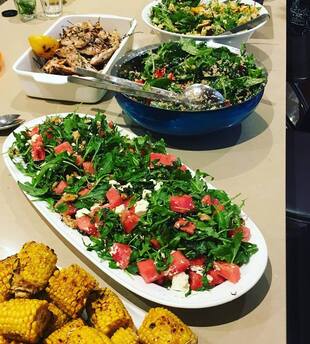
Nicole Bando, APD, IBCLC
It’s a privilege to be allowed to glimpse into a person’s life, family, thoughts and vulnerabilities. When discussing weight, health and body image, these aspects are so closely intertwined, that to really understand someone’s dietary choices, you must first understand them. Celebrations, eating out and socialising are a part of our lives and learning how to manage these occasions makes a big difference to your everyday health. Though it can be tricky to make informed choices at times of temptation and plenty, we can learn how to integrate these parts of our lives to create a balanced approach.
I read an article by The Age columnist, Jessica Irvine on the weekend, which really spoke to me of this concept. It highlighted how in every possible way, we live in a modern society of excess; of consumerism, objects, stuff, and of course, food. There is so much choice and availability all the time, that it can start to feel like our only choice is to consume.
So there’s the clincher; choice. I don’t want to be reductionist about health and weight management. I understand the complexities; the psychological, medical, genetic, environmental and physical factors associated with health decisions. However, if we focus on our choices in a given situation and how we can learn to make better ones, we start seeing longer term shifts in health outcomes such as weight, blood pressure, blood sugar levels, and importantly, how we feel about ourselves. It’s a good time to consider how to live and derive pleasure from special occasions, without jeopardising what is of utmost importance; our own precious health. This is possible, even when three course meals are on offer for days in a row.
1. Forward plan: List every occasion over the next week and be strategic with meals and snacks on those days. Is it a big lunch you are feeling concerned about? Have a good breakfast – oats with berries and yoghurt, or eggs on multigrain with tomato and do something active (go for a walk or gym class). In other words, set yourself up to make healthy, informed and sound decisions.
2. Consider what will be on offer: if going out, check the menu in advance and make the best decision you can. If at someone’s home, you may have an idea of the fare. When you arrive, scope out what is available decide what you would really love to eat. Please, enjoy it. By allowing yourself to do so and letting go of dieting ‘rules’, such as ‘no bread or pasta or dessert,’ you will immediately make better choices. This doesn’t mean lose all barometer of fullness and go crazy; it means – give yourself the permission to taste, nourish and celebrate, whilst listening and ultimately respecting your body. Take a plate and load up on salads or vegetables, choose a small amount of the available protein (chicken, meat, fish) and similar size of carbohydrate (pasta, potato, rice). Try to avoid mindless snacking on dip & cheese platters and save room for the main event. If there is a cheese you love, take a small piece with crackers, taste and enjoy it.
3. Save room for your favourite dessert (mine is my mum’s chocolate cake). Avoid going back for seconds by eating slowly, check in on how you are feeling. Enjoy a glass of wine if it makes you happy. Move away from the table when done; a family board game or walk around the block might be a welcome distraction.
4. If you feel uncomfortably full, or have over indulged, avoid the guilt and negative self talk and instead reset at the next meal. Choose to eat lighter – a salad, or some toast and please do not punish yourself. Food is not tied into moral worth, eating too much does not make a person ‘good’ or ‘bad’, it makes them human. Learning from these times can help us approach the next occasion differently. The ability to reset helps us shift towards a healthy lifestyle approach; it gets easier as time goes on.
5. Perspective: One meal in isolation is not going to have a long-term impact, it is when the splurge meals carry on for days or weeks that the impact is greater.
6. Realistic expectations: Make healthy choices most of the time, plan regular exercise opportunities and be organised with fresh, seasonal meal ideas and snacks. These are the best steps towards health.
I would love the privilege to help you glow, grow or nurture and develop a healthier relationship with food. My approach is tailored to each individual’s situation. I am available for consults at NEST Family Clinic and booking details can be found at www.nestfc.com.au
children & fluids: how much?
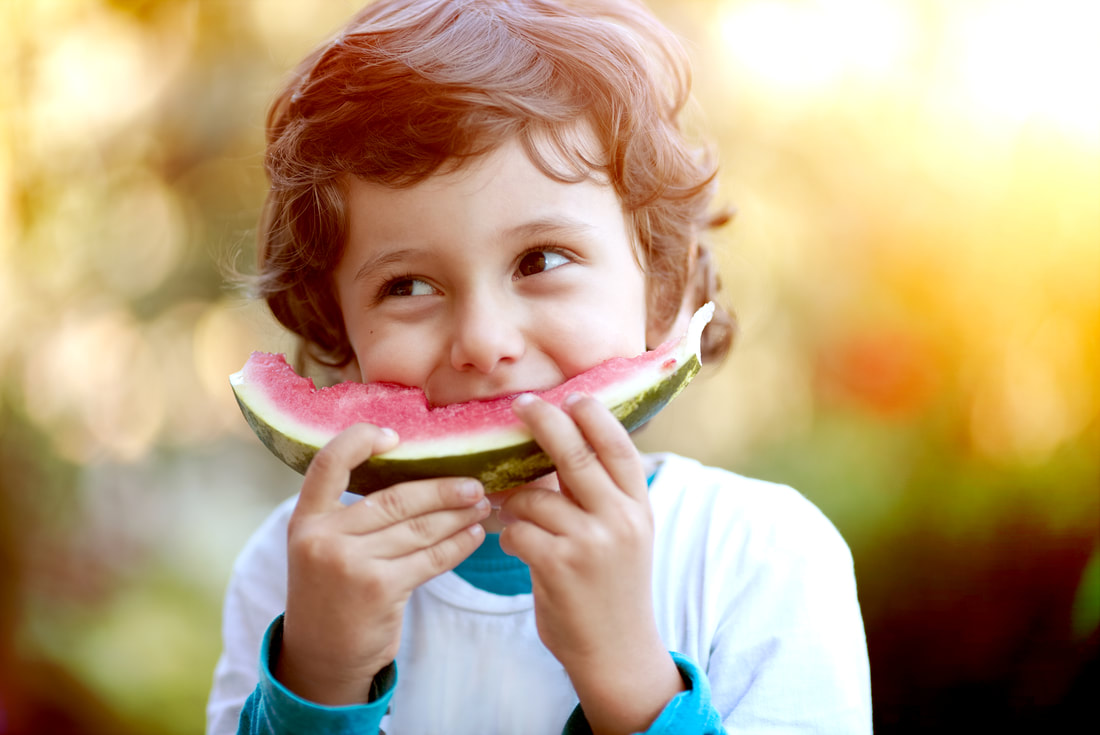
By Nicole Bando, APD & IBCLC, 17th September 2019
Water is vital for all of our body’s basic functions, such as carrying nutrients to cells, regulating body temperature and ensuring healthy bowel motions. I am often asked, how much fluid do children need?
The answer depends on their age, body weight and other factors, such as illness, environment & physical activity levels. My advice is based on a healthy population.
0-6 month old babies need 150mls of fluid per kg per day. Many parents of breastfed babies worry that they can’t quantify how much milk their baby is receiving. There are many ways to tell if a baby is well hydrated, remember that what goes in must come out.
At least 5 heavy wet nappies and multiple soft stools per day are a good indicator that baby is well hydrated. Please note that after about 6 weeks, a breastfed baby poo only once per day. it is also normal for a breastfed baby to last 7-10 days without a bowel motion, this is quite normal if baby is otherwise gaining weight and well. Bottle fed babies may only poo once every 2 or 3 days.
Baby’s skin tone, colouring and alertness is also a good indicator of hydration. Diarrhoea or vomiting increase fluid requirements and increase risk of dehydration at any age, which can be life threatening in children. If your child ever becomes listless, has a depressed fontanelle (soft area on baby’s forehead prior to the bones closing), won’t drink breast milk or formula or becomes unresponsive, seek emergency medical attention.
Both breastfed and formula fed babies are likely to need extra feeds offered in hot weather. A formula fed baby may need additional sterile water, it is best to discuss this with your GP. Breastfed babies do not require additional water, and instead may be offered extra breastfeeds.
Children 6-12 months require 120mls fluid per kilogram per day (e.g. a 9kg baby requires just over 1000mls per day). This includes water consumed from sippy cups, breastmilk, formula, as well as water found in foods.
Basic fluid requirements per day beyond 12 months (+fluid from diet) are listed below:
1-3 years: 1000mls
4-8 years:1200mls
9-13 years: Boys 1600mls, Girls 1400mls
4-18 years: Boys 1900mls, Girls 1600mls
Fluid is defined as anything liquid at room temperature (milk, jelly, yoghurt, custard), it also comes from high water content foods, such as fruit and vegetables. These are difficult to quantify, but they do count towards total fluid intake (in adults up to 20% of total intake). Beyond 12 months, cow’s milk (or alternative) and water are the best drinks for children. Specialised toddler formulae are not required in healthy children. Juices, diet and sugary soft drinks are not recommended to be part of a child’s diet. Many schools now only allow water in the classroom and children are encouraged to drink throughout the day.
If your child is straining, passing hard pellet like stools, or passing urine that is dark and offensive, this can be a sign of inadequate hydration, which can contribute to constipation and other medical concerns. See your GP if you have any concerns and seek help from a Paediatric Dietitian for specialised dietary help if you feel constipation or diet may be an issue.
Categories
Archives
